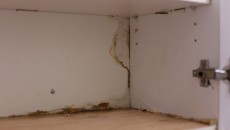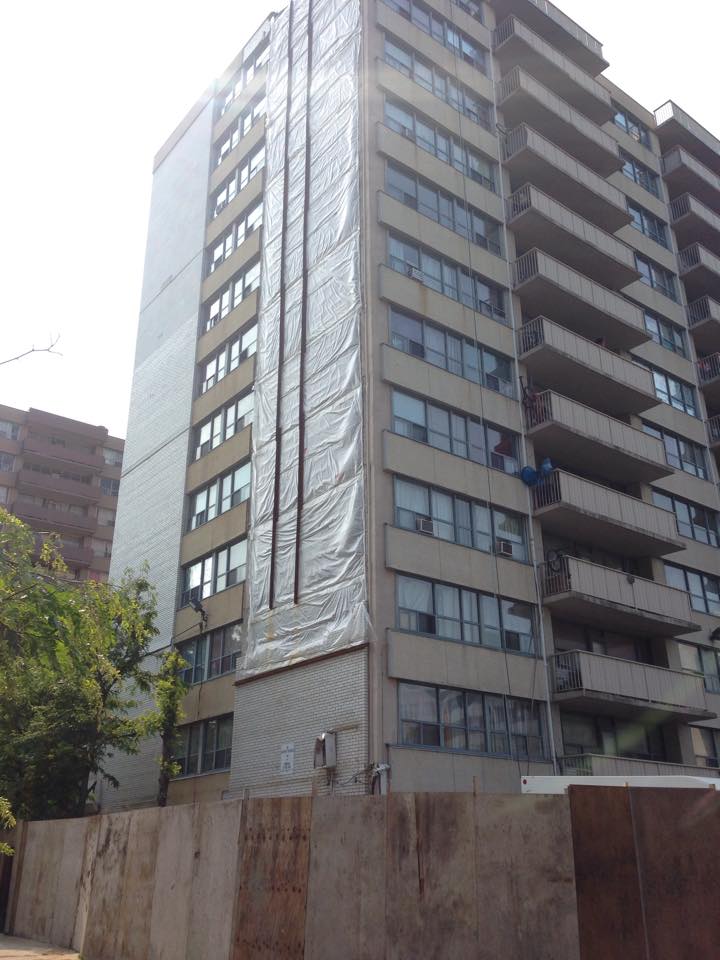by Harshita Singh
In 2014, the Toronto Community Housing Corporation issued its annual Performance Report, a document which measures whether TCHC reached its own targets in providing repairs and “sustainable living” conditions for tenants. Last year’s report included a section for Resident Satisfaction .
This new section meant to examine whether there was an “increase in resident satisfaction with the quality and conditions of their homes and buildings”, but concluded that there was “no tool to measure progress” and that a “resident survey [is] required.”
In the 2015 TCH Performance Report, however, the same statement is written under Resident Satisfaction: “Measure under development”.
Since TCHC seems pretty busy with coming up with a survey, BASICS has decided to report some of the experiences which residents at 3171 Eglinton Ave E. have shared about the state of repairs in their aging complex.
*Fatima, a resident of 3171 Eglinton for four years, described her first few months moving into the apartment: “When I arrived, I needed to repaint the walls to accommodate my son’s respiratory issues—because it wasn’t the ‘normal’ paint, I was charged for 50% of the cost.”
Respiratory concerns are shared by many residents due to the mold that is growing throughout TCHC building. Management is slow to make any changes in the perpetually damaged state of the building: ”When things go wrong, we must make an appointment with the superintendent. When you make an appointment, people only show up after three weeks, sometimes a month,” said Bilal, another resident.


Fatima and Bilal’s experiences are shared widely by others. Jacob, a long-term resident, explained that he reported mold in his kitchen cabinets repeatedly: “When they finally came to address it, they just painted over it. I keep my cups in there, it’s a health concern”.
Some aspects of the TCHC building seem to never get fixed, as BASICS reporters realized during our weekly stairwell hikes to the twelfth floor. “When I came, it was because I was told the building was very accessible. Then the elevators started to break down. Now they break two or three times a month,” said Fatima. “They are still broken now.”
Just this month, BASICS reporters saw one woman get her foot stuck in the doors of the elevator at 3171 Eglinton, due to its faltering ability to sense the presence of passing bodies. Disturbingly, after the initial shock, she seemed fairly dismissive of the occurrence: “It’s not the first time,” she said with a shrug.
The dismissal of individual experiences are unsurprising when seeing how building-wide infrastructural crises are dealt with. Bilal described the bursting of hot water from broken pipes in February: “The water flooded the plaster in the entrance, it wasn’t fixed until March.”
The fall of four storeys worth of brick in April of this year was covered by multiple Toronto news sources. Residents who spoke to us described it as “terrifying.” Hannah, a mother who has lived at 3171 for decades, reported being “afraid to sleep in my own room at night.”
Residents of that end of the complex were given a complimentary hotel-stay three weeks after the event, perhaps as a belated apology by TCHC for the potentially-life threatening situation. Today, the outskirts of the building are surrounded by two fences, apparently in the hope that no remaining bricks will fall on passing pedestrians. One fence is a metal grille, and the other plywood. Yet the ravaged south end of the building remains covered by no more than a long sheet of tarpaulin.
Experienced tenants have told BASICS repeatedly that after private property management companies—such as DMS, which currently runs 3171 Eglinton—took over from TCHC employees, repairs have become even rarer and less effective.
The TCHC website claims that “contract management is a cost-effective way to provide the same high level of service to tenants.” If the above tenant experiences are what TCHC identifies as a high level of service, then it is clearly unqualified to provide any assessment of “sustainable living” or “resident satisfaction”. Only the tenants themselves are qualified to measure the performance of TCHC, and this can only be achieved through by communicating and organising with one another.
*Some of the names of 3171 Eglinton residents have been changed in this article at their request.
Comments
